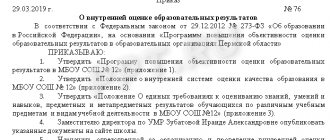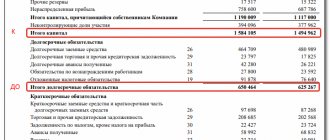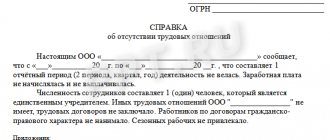A personnel order is an order from the management of an enterprise, which records one of the working issues relating to personnel. Hiring and dismissal, business trips and transfers to another location - all this should be reflected in specific documents signed by the head of the organization.
The personnel order is included in the group of administrative acts of the enterprise management. This is one of the main documents when forming the relationship between employer and employee; the order records their occurrence or termination, change. Such orders make up a large part of the company's personnel records. When registering them, it is necessary to follow certain rules and comply with the procedure established by law. It is especially important to take into account that it is mandatory for workers to familiarize themselves with personnel orders.
When you need an order for personnel
Based on the norms of the Labor Code of the Russian Federation, we can conclude that the employer is obliged to register all personnel issues in its administrative acts and orders:
- hiring (Article 68 of the Labor Code of the Russian Federation);
- transfer to another job or position (Article 62 of the Labor Code of the Russian Federation);
- termination of the employment agreement (Article 84.1 of the Labor Code of the Russian Federation);
- provision of planned leave or recall from leave (Article 116 of the Labor Code of the Russian Federation);
- going on a business trip (Article 166 of the Labor Code of the Russian Federation);
- encouragement or disciplinary action against an employee (Article 193 of the Labor Code of the Russian Federation).
The corresponding orders are the primary accounting documents in the field of labor for the further maintenance of work books, employee cards, and their personal files. Personnel department employees prepare orders, but they are signed exclusively by managers.
Application for internal part-time job
A part-time worker is an employee who carries out several types of work activities for one employer or for an individual entrepreneur (Part 1 of Article 282 of the Labor Code of the Russian Federation).
This means that the employee works for the employer in his main position, and in addition to his earnings, he works part-time in some other vacancy. It is necessary to distinguish between the term internal part-time work and additional (external) labor volume of work (Part 3 of Article 282 of the Labor Code of the Russian Federation). This concept is enshrined in the Labor Code of the Russian Federation, which simplifies its implementation. However, the main factor in internal part-time work is working in one institution or with an individual entrepreneur.
Drawing up a part-time agreement has practically the same procedure as when concluding an ordinary employment contract, with the exception of some points. When applying for an internal part-time job, you do not need to provide documents, since the employer already has them when receiving the main vacancy. However, it is better to prepare copies in advance for insurance purposes.
To apply for a part-time job, you will need to prepare:
- Photocopy of passport.
- Supporting documents confirming your qualifications to work in the proposed position (if, of course, this is required).
- An employee's request for part-time employment.
After submitting the petition, you will need to draw up an employment agreement with the individual entrepreneur, which stipulates the conditions for part-time work. When registering it, it is required to display labor standards that comply with safety regulations - within 4 hours a day, while simultaneously working at the main post. If a part-time worker has a day off at his main job, he can work part-time on that day – 8 hours.
( Video : “Reception of an individual entrepreneur”)
How are orders for personnel drawn up?
At one time, officials developed unified forms for personnel documents, including orders. Since 2013, the authorities have abandoned the mandatory use of them. That is, employers are not obliged, but can use the proposed sample orders. All order forms necessary for personnel officers are available in Resolution of the State Statistics Committee of Russia dated January 5, 2004 No. 1. The table indicates the document numbers for further use in work. In parentheses - data on the forms used when issuing one order for several employees.
| Name of the document, order | Form number |
| About hiring | T-1 (T-1a) |
| About transfer to another job | T-5 (T-5a) |
| About granting leave | T-6 (T-6a) |
| On termination of an employment contract | T-8 (T-8a) |
| About sending an employee on a business trip | T-9 (T-9a) |
| About employee incentives | T-11 (T-11a) |
If the organization provides for the preparation of orders according to unified forms, the original details cannot be changed in them, only new ones can be added. For example, expand the lines, clarify information about the persons validating the order. If the local regulations of the enterprise stipulate other samples, then the rules for supplementing them must also be indicated.
An example of an employment order based on a unified form
Sample order for personnel in text format
Rules for drawing up orders: step-by-step instructions
In order to understand the rules for drawing up administrative documents, let’s consider an order for the main activity - a sample decree approving the staffing table.
All PODs are compiled using an identical algorithm and have a similar structure.
Let's consider step by step how to draw up an order for the main types of activities in accordance with the new GOST:
- The document must be drawn up on the organization's letterhead. At the top you must indicate the full (short) name of the institution, as well as its emblem and trademark (if any).
- Below is the name of the type of document - order, place of preparation (publication) (city or other locality) and its details (registration number, date). The numbering of orders for core activities is continuous, that is, each decree is assigned a serial number. Numbering starts from the beginning of the new year and ends with the last working day of the reporting period.
- The title is set - the topic of the administrative documentation.
- Preamble - text that precedes the instructions of the management. It is necessary to determine the reason for issuing the document, as well as the standard to which the manager refers. You need to end the introductory part with the word “I ORDER” (always in capital letters).
- Next, the instructions are listed, the deadlines for their implementation, the responsible persons and the person monitoring the progress of the execution of the orders are appointed.
- After listing all paragraphs, the instructions are signed by the manager or other authorized person according to the following scheme: position - signature - transcript of the signature. If available, a stamp is placed.
- The document ends with a section where all the persons indicated in the text sign. The signature confirms that the employee is familiar with the edition of the decree. The employee responsible for the development of this document must also sign.
If the decree requires additional information to be secured, annexes are drawn up that are an integral part of the AML. Their presence is stated in the text of the decree, and the annexes themselves are numbered in order and also signed by the head.
In accordance with GOST R 7.0.97-2016, if the administrative document is drawn up on two or more pages, then the second and subsequent pages must be numbered. The page number must be indicated in the middle of the top margin of the document, maintaining a distance of at least 10 mm from the top edge of the sheet.
The new standard allows you to draw up an administrative document on the front and back sides of the sheet. In this case, the width of the left margin on the front side of the sheet and the right margin on the reverse side should be the same.
Other types of orders for personnel
There are other types of orders for personnel. We give only an approximate list of their enlarged groups:
- hiring, dismissal, transfer belong to the group of organizational orders for personnel;
- disciplinary orders: punishment or reward;
- regulatory: about various types of vacations, about sending on a business trip;
- salary: on the establishment of salaries, a system of bonuses and various additional payments;
- motivating: on the use of bonuses and other additional rewards;
- of a technical nature: to change, clarify or cancel an order if necessary.
Each subsequent group of orders in the list differs from the previous one, but they all regulate the interaction of the employer with the staff of employees, individually with each employee or with their groups.
Example of a disciplinary order
How to fill out an individual entrepreneur’s work book when hiring an employee
After completing the entire employment procedure for an individual entrepreneur, the entrepreneur must, within 3 days, enter the necessary information into the work book on the “Job Information” page:
- First, fill in the name of the individual entrepreneur, displaying his last name and initials.
- Then, in the first column of the form the number of the next entry is entered.
- In the “Date” column – the day, month and year of filling out the information are recorded.
- In the next column “Information about admission ...” - the text of the order “Accepted ... from ...” is written down, displaying who hired the employee and from what date.
- In the last column of the form, the order for registration of the work is written down, displaying its number and date of issue.
The work book is filled out after signing the employment contract. If a civil agreement is signed, the work book is not filled out.
An example of filling out a page of a work book.
Making changes to an order
Amendments and adjustments to an already officially issued order can be made on the basis of another order. In such an order it is necessary to indicate the reason for the changes, it is necessary to indicate the order to which the changes are made, and the consequences of the changes. It is mandatory for the employee to become familiar with such acts.
Adjustments are most often made as a result of:
- changes in current legislation;
- changes in circumstances that are relevant for the execution of the order, for example, changes in the circumstances of place and time;
- changes in the initial personal circumstances of the employee in respect of whom the administrative act is issued.
Thus, amendments are necessary if circumstances or the legal basis have changed, and in its current form the order is irrelevant and does not achieve the goal set when it was drafted.
What is the difference between an order and an order?
Directions and orders are somewhat similar to each other: they have approximately the same structure, purpose, etc. However, there are differences between them:
- Area of influence. The main difference between an order and an order is that an order regulates legal relations and the main activities of the company, while an order regulates operational issues.
- Validity. In most cases, the order concerns some local issues, a small number of employees, and is valid for a strictly limited and fairly short period: until it is implemented. Orders have a longer validity period and are often subject to specific changes, while directives are usually simply reissued.
Canceling an order
Cancellation of an order regarding personnel is carried out on the basis of a management decision by a separate administrative act. In the order of cancellation, similar to the act of making amendments, it is necessary to indicate the basis for the cancellation and a reference to the order being canceled, subsequent changes in legal relations, and actions that need to be taken. The administrative act must also be made available for review to the employee whose rights and interests it affects.
Cancellation of an administrative act may become necessary due to a change in the initial circumstances under which the original order was adopted. In the activities of business entities, such cases arise quite often.
Most often, the following administrative acts need to be cancelled:
- about hiring;
- on termination of employment relations at the initiative of the employee or employer (for example, if it turns out that the reason for violation of labor duties or labor regulations is valid);
- about sending on a business trip;
- on the provision of the next paid leave;
- on early termination of a disciplinary sanction.
Who has the right to write an order?
An order can only come from the director of the enterprise (or his representative acting on the basis of a power of attorney), and the order can be written by heads of structural divisions and branches, heads of departments, etc., that is, all those persons whose job description specifies this function in the form of a right.
It is important that the employee issuing orders has an idea of how to correctly draw up and execute a document, knows the basics of labor and civil legislation, as well as the internal regulations of the organization - these are the documents that should be referred to when drawing up the document.
Administrative and organizational documents
Most internal processes at an enterprise are initiated by administrative documents, the main one of which is the order. In the activities of organizations or individual entrepreneurs, an order is used to convey the will of management to employees. The preparation of such a document occurs in several stages: templates of orders are studied, and after drawing up the document, the order is signed and the executors familiarize themselves with it.
The activities of collegial and management bodies, commissions or councils are reflected in the minutes. The main feature of such a document is the presentation of actions in strict sequence and the compilation of an event that is recorded directly in the process.
Other features or what else you need to know about how to write an order correctly
Any document of this kind comes into force from the moment of publication. In some cases, it is possible that it will come into force later than the date of publication, which must be indicated in the text itself, for example: it will come into force on April 30.
Absolutely all orders are stored in the archive. If the question concerns the main activity, the period of their preservation is about 75 years for personnel, administrative and economic - 5 years.
Applications are drawn up for individual orders; they are needed if a large amount of information needs to be entered. If there are several of them, then they must be numbered.









